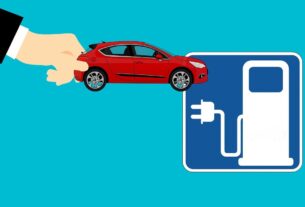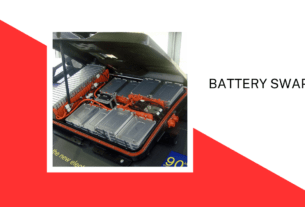When it comes to electric motors, there are several types to choose from. Two popular types are Brushless DC (BLDC) motors and Permanent Magnet Synchronous Motors (PMSM). While they may seem similar on the surface, they have some differences that can make one more suitable for a particular application than the other. Let’s see BLDC vs PMSM.
BLDC motors are also called electronically commutated motors. These motors are commonly used in applications where high torque and power density are required, such as electric vehicles and industrial machinery. They operate by using electronic circuits to switch the current in the motor windings, allowing the motor to rotate.
PMSM motors, on the other hand, use permanent magnets to create a magnetic field that interacts with the stator windings to generate torque. They are often used in high-performance applications, such as robotics, aerospace, and renewable energy systems, where precision and efficiency are critical.
Differences BLDC vs PMSM :
- Design and Construction
BLDC motors have a rotor with permanent magnets and a stator with windings. The windings are energized in a specific sequence to create a rotating magnetic field, which causes the rotor to turn. The electronic commutation of the motor allows for precise control of the motor’s speed and direction.
PMSM motors also have a rotor with permanent magnets and a stator with windings. The main difference is that the windings are designed to produce a sinusoidal magnetic field, which interacts with the permanent magnets to generate torque. This design allows for a higher power density than BLDC motors.
- Efficiency
Both BLDC and PMSM motors are highly efficient, but PMSM motors have a slight advantage. This is because the permanent magnets in a PMSM motor create a stronger magnetic field than the electromagnets in a BLDC motor. This allows PMSM motors to produce more torque per ampere of current, resulting in higher efficiency.
- Speed Control
BLDC motors are known for their excellent speed control. Their electronic commutation allows for precise control of the motor’s speed and direction, even at low speeds. PMSM motors also have good speed control, but they require more complex control algorithms to achieve the same level of precision.
- Cost
BLDC motors are generally less expensive than PMSM motors. This is because BLDC motors use electromagnets instead of permanent magnets, which are less expensive to manufacture. However, the cost difference between the two types of motors is decreasing as permanent magnet prices continue to fall.
- Applications
BLDC motors are commonly used in applications where high torque and power density are required, such as electric vehicles, industrial machinery, and household appliances. PMSM motors are often used in high-performance applications, such as robotics, aerospace, and renewable energy systems, where precision and efficiency are critical.
Both BLDC and PMSM motors have their advantages and disadvantages, and the choice of which one to use depends on the specific application requirements. BLDC motors are better suited for applications that require high torque and power density, while PMSM motors are ideal for high-performance applications that require precision and efficiency.
Future
The future of BLDC and PMSM motors is bright, as they continue to find applications in a wide range of industries. Here are some trends that are likely to shape the future of these motors:
- Increasing Efficiency
Efficiency is a critical factor in electric motors, and both BLDC and PMSM motors are already highly efficient. However, there is still room for improvement, and future developments are likely to focus on increasing efficiency further. This could involve the use of new materials, improved design, and more advanced control algorithms.
- Integration with IoT
The Internet of Things (IoT) is transforming the way we live and work, and electric motors are no exception. BLDC and PMSM motors are likely to become more integrated with IoT systems, allowing for remote monitoring, control, and optimization. This could help to reduce energy consumption and improve performance in a wide range of applications.
- Expansion of the Electric Vehicle Market
The electric vehicle market is growing rapidly, and BLDC and PMSM motors are likely to play a significant role in this expansion. These motors offer high efficiency, high power density, and precise control, making them ideal for use in electric vehicles. As the market grows, we can expect to see further developments in motor technology that will help to improve range, performance, and charging times.
- Development of New Applications
As electric motor technology continues to evolve, we can expect to see new applications emerge. For example, BLDC and PMSM motors could be used in drones, robots, and other autonomous systems, where precision and efficiency are critical. These motors could also be used in renewable energy systems, such as wind turbines and solar panels, to help improve energy efficiency and reduce costs.
In conclusion, the future of BLDC and PMSM motors is likely to be shaped by increasing efficiency, integration with IoT systems, expansion of the electric vehicle market, and the development of new applications. As these trends continue, we can expect to see further advances in motor technology that will help to drive innovation and growth in a wide range of industries.



